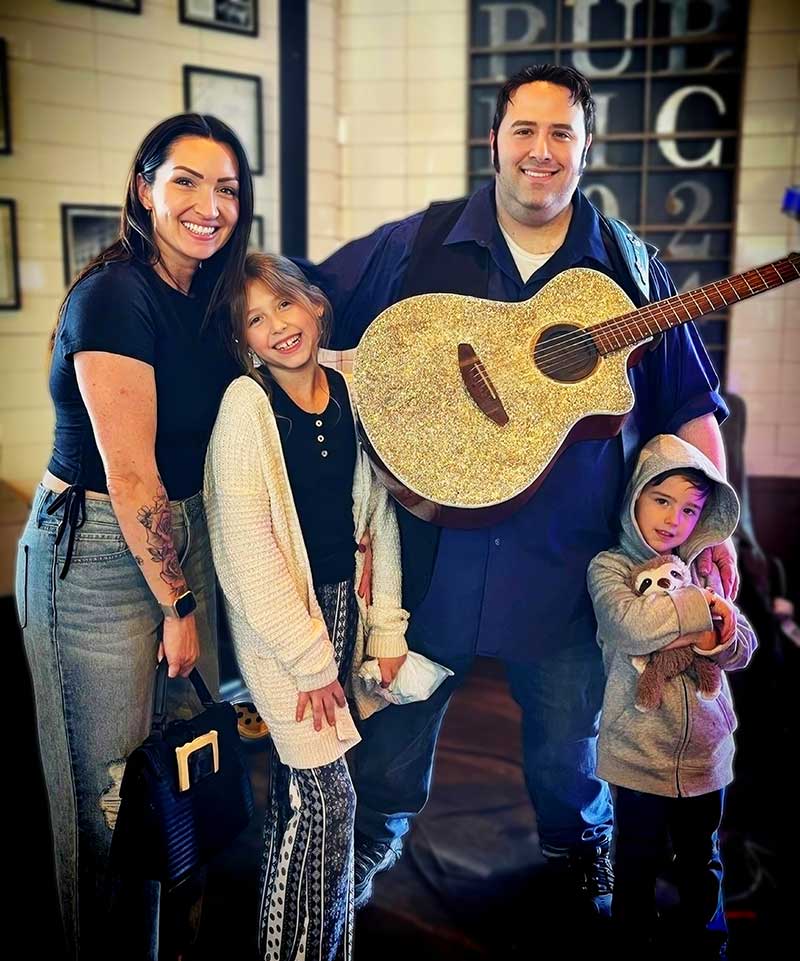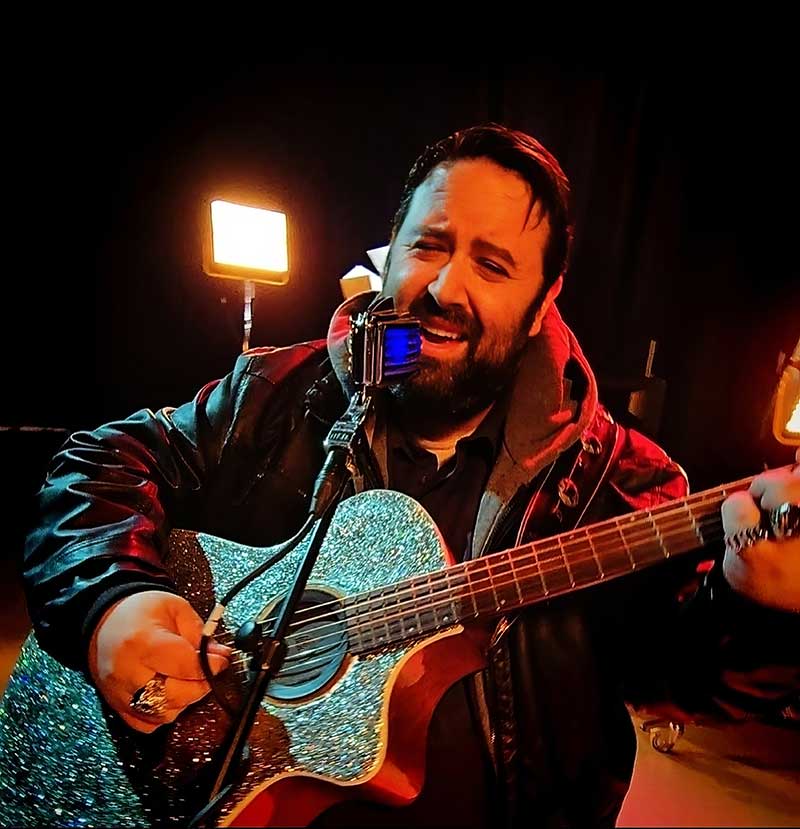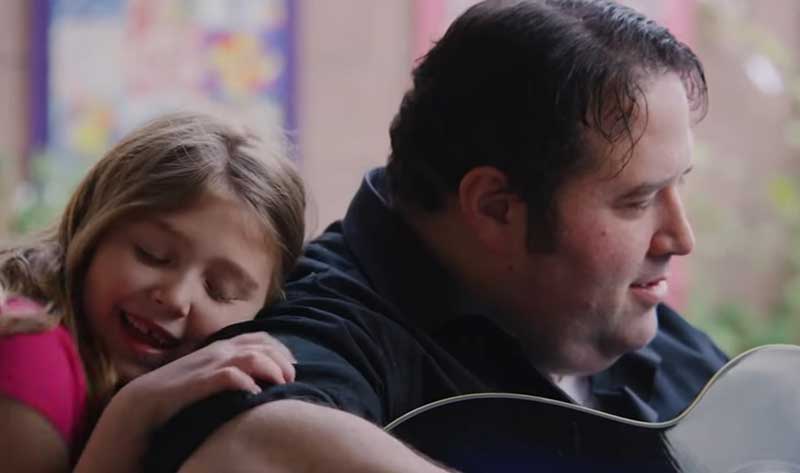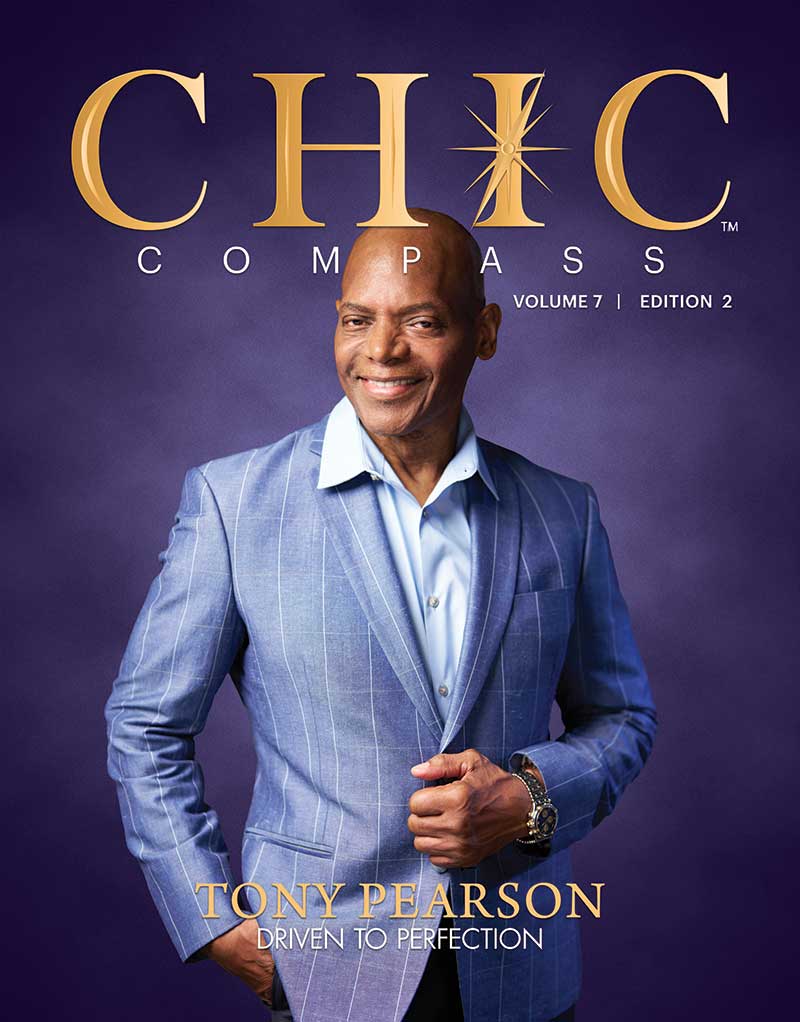
Hal Savar performing at the Firelight Barn with Bert Django (lead guitar), Amonte Henry (drums), DJ Atewo (keys) and Peezy (bass)
Hal Savar
From Human Jukebox to Trailblazing Songwriter
BY KENDALL HARDIN
Hal Savar single-handedly carved out an astounding musical journey for himself as a talented artist.
Growing up in Philadelphia and numerous locales across the country as an Air Force brat, music became his sanctuary—an outlet for self-expression and connection.
At 16, he resurrected his mother’s old guitar from storage and taught himself to play, sing and write songs. This journey of self-discovery grew into a lifelong passion, fueling his desire to create original works and entertain as many people as possible through his music.
Performing as a Human Jukebox
Savar landed in Las Vegas 23 years ago, where he honed his craft and live performance style, appearing nightly at every venue, dive bar, restaurant, pub and casino he could get into.
He has a rare gift some scientists call auditory memory, associated with eidetic memory—the ability to recall images and sounds with high precision. People with this ability often have a strong connection to music, which enhances their recall of lyrics and melodies.
Savar demonstrated this talent on stage in interactive shows where the crowd created the experience by picking from a menu of 350 songs, which he instantly and expertly performed “as a one-man band.” His adoring fan base dubbed him “The Human Jukebox.”

Hal Savar on his epic road trip accompanied by loving family fans Heather, Violet and Memphis
Life as an Independent Musician
In a recent interview with CanvasRebel, Savar described his challenges as an independent musician.
“I’m my own roadie, setting up and taking down at each show. I had to learn to design my own graphics and fliers. I do all my own promos. I book my own shows and pay my musicians when I play with a band.”
Nonstop gigs showcase Savar’s enormous range, covering folk, rock, blues and melodic pop. However, gig artists usually secure work through booking agents, who pay “net 30″—meaning musicians may not get paid for four to six weeks. In addition, casinos have cut back on their booking directors, relying instead on local musicians as background for gambling and drinking rather than as featured entertainment.
Independent artists receive no health care or retirement benefits, and gig artists are rarely unionized.
“Typically, I sing for two to four hours at my shows—sometimes two shows a day—four nights a week. While I do all that, I also write and record my own new music.
“I spent a long time fighting and hustling to play music for a living, and I would hide away my own music for fear of being rejected. But after the pandemic, I realized I wanted to reach the most people I could to bring joy into their lives.”
Hitting the Road With ‘Highway to Hal’
“When the pandemic hit, the Las Vegas entertainment industry collapsed, and we were all out of work with no safety net,” he recalled. “It was a shock that made me deeply re-evaluate my life choices as an artist.”
So, in the summer of 2021, he embarked on a unique journey, taking his family—including his 1-year-old son and 7-year-old daughter—on the road. During this expedition to music meccas such as Memphis, Branson, Nashville and Austin, he independently filmed a docuseries titled “Highway to Hal.”
The series explored live music hotspots across the country, while connecting with key players in the music industry, and performing solo as well as with local singer-songwriters.
“I learned so much on the road about today’s digital music industry—and where I can fit in,” he said. “Songwriters need critical feedback on their songs, helpful insights into navigating today’s digital platforms and solid encouragement from successful artists and producers.”
Upon returning home, he set a bold goal: to release a new single every six weeks, keeping his music fresh and relevant while engaging a fan base that grows with each release.
While releasing new music is central to his songwriting, Savar’s performances in Las Vegas are equally important to his artistic identity. Every performance is an opportunity to deliver an unforgettable experience, and each song is packed with passion and authenticity.
Savar is committed to engaging his audiences and online fans. He is making his mark on the music industry with his raspy vocals, percussive guitar style and compelling storytelling.
Launching the Vegas Songwriters Showcase
After touring the country with the docuseries experience, Savar returned to Las Vegas more convinced than ever that the city holds an endless array of up-and-coming talent. Inspired by his visits to cities with strong local music scenes, he sought to create a rallying point for indie artists to build a vibrant music community in Vegas.
In 2022, he founded the Vegas Songwriters Showcase, which convenes weekly in venues across the valley. Over the last three years, the showcase has featured more than 150 shows and 3,000 artist performances, with three primary goals:
Cultivate and create a thriving original music scene in Las Vegas
Give original artists a place to network and collaborate with other artists, perform inspired music and connect with the community
Provide the Las Vegas community with a weekly performance event where audiences can celebrate and support local artists
One of his collaborations resulted in the song “Nevada to Mississippi,” a blend of country artist Emily Stinnett’s style with his folk-rock sound. It was featured at Keith Thompson’s Composer’s Showcase at The Smith Center and became popular on streaming platforms.

Captivating Las Vegas audiences as “The Human Jukebox”
Trailblazing to the Top
“I don’t think the average person thinks about the costs that go into creating and promoting emerging artists’ music,” Savar said.
“When I want to record a song, it takes a lot of time, and a quality recording costs a chunk of money. Once it’s produced in the studio, I have to market it with my own time and money while getting it out there on Spotify and Apple Music so the algorithms feature my songs more often with followers. Then, I have to play shows to help support those new songs with audiences that can hear me perform live.
“It’s shocking that the majority of venues and clubs don’t pay for original music artists. I can make a living playing three-hour cover music shows, but if I want to play my own music, I would need a day job. The good news is that we have some hyper-talented producers in town, but their prices shoot up with their rate of success, ultimately pricing indie artists out.”
Indie artists need that one breakout song or album that catapults their work into the industry limelight—perhaps picked up by a superstar entertainer or optioned for a film or a streamed TV series. Savar’s latest work has received rave reviews from online industry critics. He is lauded for his fresh lyrics and music that weave clever, memorable, soulful stories for the listener, whether it’s a ballad or an anthem.
Anonymous Author describes Savar’s recent works as “Big on lyrics. Unique music that catches the ear. Ridiculous production! Another banger on the way!”
Spiderhands beautifully deconstructs three of his recent hits—”Nevada to Mississippi,” “Vegas” and “Bar Karma”—handing over the ultimate compliment: “Hal Savar has found his own unique voice—you can tell it’s a Savar song.”

Hal Savar’s songwriting goal is to release a new single every six weeks
Chic Compass: Who are your biggest musical influences?
Hal Savar: That’s a tough one for me. I’m influenced by many artists, from newer talents like Ed Sheeran and Shawn Mendes to legends like Bob Seger, John Mellencamp, Stevie Ray Vaughan and Michael Jackson.
Chic Compass: What is your greatest non-musical influence?
Hal Savar: Las Vegas as a city is part of my DNA as an artist.
Chic Compass: How can Las Vegas foster an environment supporting artists and creatives?
Hal Savar: It’s a shame we don’t have what other cities like Memphis, Seattle, Nashville and Atlanta have established—like grants for emerging artists, dedicated performance spaces and street districts, or even corporate-sponsored festivals for new songwriters that attract locals and visitors alike. Fans can help by subscribing online to help young artists keep going.
We need to work to establish weekly showcases with all the casinos on and off the Strip—if only each would host one exciting venue a year. We’re ready to pitch an annual Las Vegas Independent Music Festival to showcase local indie artists alongside national and international breakout stars.
We should build our showcase into a nonprofit collective organization so we can apply for program grants and secure corporate and individual support to fund ongoing initiatives and performances for our artists and the community. The talent is here, and the audience is hungry.

Recording in Sun Studio in Memphis, 64 years later to the exact night Elvis Presley recorded his first song “That’s All Right”
Chic Compass: What are your plans for the future?
Hal Savar: I’m going to keep releasing a new single every six weeks while working to expand my fan base. I want to continue writing, recording and performing for as many people as possible. I want to show my kids that you can accomplish your dreams if you love what you do and work hard at it. And I’m ready to break some barriers!
Chic Compass: On that note, we’ll conclude with the final line from Savar’s “Bar Karma” track: Can I get an Amen?!



Leave A Comment